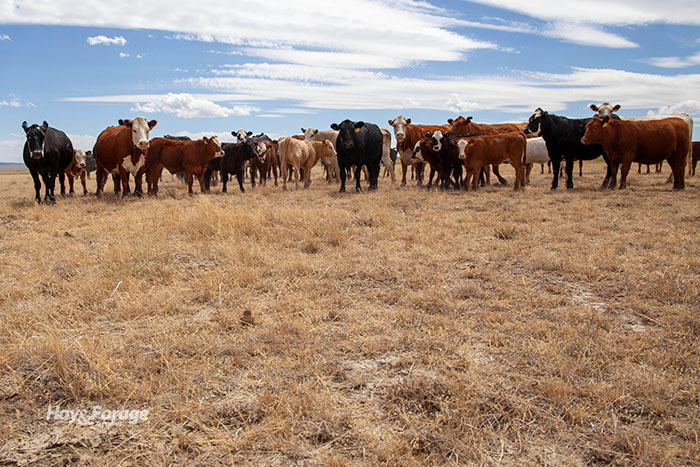Save cattle and pastures with a drought plan |
| By Mike Rankin, Managing Editor |
|
|
 One look at the Drought Monitor website and the viewer is struck by the vast array of red and brown colors throughout the western half of the United States. Unfortunately, the forecast for improvement in the near future isn’t particularly optimistic. Like many other regions, Megan Van Emon notes that most cattle producers in her state of Montana are already wrestling with drought conditions. The Montana State University Extension beef specialist says drought planning needs to be front and center on most cattle ranchers’ current to-do list. “One of the key aspects of a drought management plan should be critical dates and thresholds for an operation regarding grass production, cattle production, and current inventory,” Van Emon says. “Grass production in Montana relies heavily on spring and early summer precipitation for forage quality and quantity. Without needed precipitation during those months, grass production is reduced, which (also) reduces grazing time and capacity of pastures,” she adds. Check the cattle If forage growth slows in spring or early summer, Van Emon recommends that cattle be monitored closely. Check body condition on cows and ensure calf growth is at an acceptable level. “One method to aid in reducing forage demand from your cow-calf pairs is to early wean,” Van Emon says. “Removing the suckling calf will reduce nutrient requirements of the cow and reduce forage consumption.” Early weaning does require additional labor and resources. This might include feeding the calves on a drylot and purchasing additional feed. If early weaning is implemented, make sure the calves are placed in an environment where adequate growth will continue, Van Emon advises. Take inventory A second important component of drought planning is to take inventory of available feeds and water sources. Determine exactly how much hay, straw, supplemental feed, pasture forage, and vitamins and minerals will be at your disposal moving forward. This will help determine what additional feed resources might need to be purchased should drought conditions persist. “A water source inventory may include making a list of your current water sources and the impacts previous droughts have had on those sources,” Van Emon notes. “Knowing the impacts of drought on your water sources may alter your planned grazing rotation.” If the drought persists and resources are short, a reduction in stocking rates may be the most economical strategy to maintain cattle performance and prevent permanent damage to pasture productivity for years to come. “Reducing stocking rates on pasture may be done through selective culling or moving your herd to a drylot,” Van Emon says. “These decisions and lists for culling priority should be included in a drought management plan.” There are many options available to cope with drought. However, a strategy that works on one operation may not be the best alternative on another operation. Whatever the most economically viable answer may be, Van Emon says it’s best if drought plans are determined early . . . before the situation gets dire.
|
